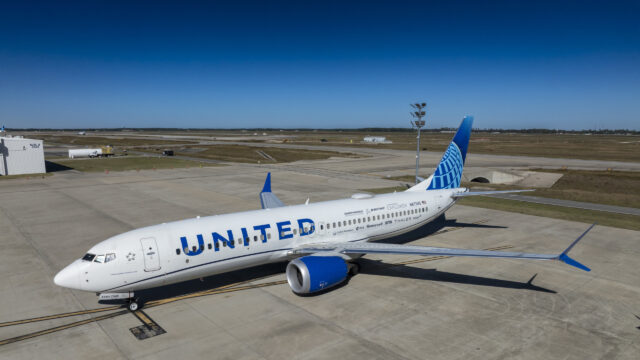Human error in the skies: The Sacramento helicopter crash and the growing crisis in air ambulance safety

October 7, 2025

Three air medical crew members were fighting for their lives on 6 October after their helicopter, a REACH Air Medical Services Airbus H130, crashed onto California’s busy Highway 50 near Sacramento.
The helicopter had lifted off from UC Davis Medical Centre just minutes earlier when, at around 7:00 pm, it plummeted next to the central reservation in a burst of smoke and flame. Miraculously, no vehicles were struck, and there was no patient on board.
The pilot, a flight nurse and a paramedic were pulled from the wreckage by first responders and bystanders, one of whom reportedly crawled under the aircraft to help lift it as rescuers freed a trapped crew member. All three were rushed to hospital in critical condition.
Helicopter Crash
— Sacramento Fire Department (@SacFirePIO) October 7, 2025
US HWY 50 at 59th St.
Crews responded to a helicopter down on EB US50 West of 59th St. On arrival, 3 victims from the aircraft were located in critical condition. No vehicles were involved, just the helicopter. pic.twitter.com/dXPyGQ5cEl
”It could have been much worse,” a Sacramento Fire Department spokesperson told local media, confirming that no civilians on the highway were injured. The eastbound lanes of Highway 50 were closed for several hours as emergency teams and investigators worked through the night.
The cause of the crash remains under investigation.
Helicopter accidents on the rise
While the Sacramento crash made national headlines, it was far from an isolated event. Across the world, 2025 has been a grim year for helicopter aviation, particularly in the air ambulance and medical transport sector.
In the United States alone, 83 helicopter air ambulance (HAA) accidents occurred between 2010 and 2021, with the Federal Aviation Administration (FAA) noting that fatal crashes in this category are twice as common as in non-medical helicopter operations. From 2013 to 2023, the FAA reviewed 158 incidents, including 53 accident reports, 3 serious incident reports, and 102 voluntary safety submissions from flight crews.
from Reddit: medi helicopter crash on the 50 in Sacramento (near Stockton exit), looks like they'd just taken off from the children's hospital pic.twitter.com/msPxnbPYi9
— kempa🕳️ (@youknowkempa) October 7, 2025
Already in 2025, several high-profile crashes have underlined the global risks of medical aviation:
- In April, a Bell 206 LongRanger went down in New York’s Hudson River, killing all six on board.
- In May and June, two separate crashes in India’s Uttarakhand region killed eight people, including doctors and pilgrims.
- In August in Nairobi, an AMREF Flying Doctors medical jet crashed into a residential area, killing six people, including two civilians on the ground.
While these tragedies differ in context, they share a troubling undercurrent: the human and organisational challenges of flying complex aircraft in time-critical, high-stress medical environments.
Human factors: What the FAA’s latest analysis reveals
A recent FAA study on Human Factors Analysis of Helicopter Air Ambulance Accidents, Incidents, and Events (2013-2023), has shed light on why HAA crashes persist despite improved technology.
The report identified situation awareness as the single most common human factor behind such events, contributing to nearly half of all analysed accidents. Pilots often lost track of visual cues, obstacles or instrument data, particularly during night or bad-weather landings.
Judgement and decision-making errors were also widespread, including pilots pressing ahead into marginal conditions, misjudging terrain, or continuing flights despite better alternatives.
Other key contributors to HAA accidents included:
- Procedural lapses – incomplete pre-flight checks or skipped safety steps
- Insufficient training – particularly for instrument flight, high-altitude or unfamiliar aircraft
- Fatigue and workload – inherent in 24-hour on-call medical missions
- Communication failures – between pilots, dispatchers, or hospital teams.
The FAA also found systemic issues: operators with weak safety cultures or ambiguous procedures often put subtle pressure on pilots to “complete the mission” despite weather or fatigue concerns.
“These flights operate in some of the most challenging conditions in aviation – low altitude, poor weather, night operations, often landing in confined or unlit areas,” the study concluded. “Human and organisational factors amplify that risk.”
BREAKING: Chaos in Sacramento — a helicopter has CRASHED onto Highway 50 near 59th Street.
— Tony Lane 🇺🇸 (@TonyLaneNV) October 7, 2025
– Medical chopper down on the roadway
– Multiple victims reported, injuries confirmed
– Traffic completely shut down as emergency crews swarm the scene
Authorities say investigations are… pic.twitter.com/v484cz7bpH
Despite advances in avionics, autopilot systems and night-vision technology, human error remains stubbornly persistent.
According to the FAA, loss of control (LOC) was involved in 40% of medical helicopter crashes, often triggered by a pilot’s inability to maintain situational awareness during approach or hover.
Experts argue that improving Crew Resource Management (CRM), ensuring that medical staff, dispatchers and pilots communicate seamlessly, is as crucial as any hardware upgrade.
The FAA recommends more simulator-based training for decision-making under stress, standardised weather-risk tools, and continued development of cockpit automation designed to reduce pilot workload rather than increase it.
Sacramento helicopter crash is a cautionary signal
The 6 Oct Sacramento crash has once again exposed the razor-thin safety margins that define emergency aviation. Witness footage showed the helicopter hovering unsteadily moments before it clipped the median, as cars screeched to a halt below.
The aircraft, a four-year-old Airbus H130, registration N414RX, had completed several routine flights earlier that day between Sacramento, Redding and Red Bluff. REACH Air Medical Services, its operator, said it was cooperating fully with investigators.
#WATCH : Drone Visuals of Medical Helicopter Crash in Northern California.
— upuknews (@upuknews1) October 7, 2025
Currently, first responders are on the scene of a helicopter crash in Sacramento, California.#California #LosAngeles #USA #UnitedStates #AviationNews #HelicopterCrash #Sacramento pic.twitter.com/lZBnrlX6Cd
For now, all three crew members remain in hospital. The National Transportation Safety Board (NTSB) and FAA have opened a joint investigation, focusing on possible mechanical issues and pilot workload in the seconds before impact.
The Sacramento crash is not merely a local tragedy; it is a cautionary signal for an industry under immense pressure. Helicopter ambulances are vital to emergency medicine, disaster response and rural healthcare, yet they operate at the very edge of safe flight envelopes.
As accident rates climb again after a brief lull in the late 2010s, aviation authorities are pushing for unified international safety standards, including real-time flight data monitoring, fatigue risk management, and mandatory human factors training for all air medical pilots.
















